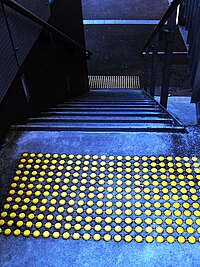
Photo from wikipedia
This article presents the first integrated somatosensory feedback system based on human body communication (HBC). The proposed wireless system, which is implemented using a 180-nm CMOS process, composed of a… Click to show full abstract
This article presents the first integrated somatosensory feedback system based on human body communication (HBC). The proposed wireless system, which is implemented using a 180-nm CMOS process, composed of a wrist device, a brain stimulator device (BSD), and an artificial mechanoreceptor, is designed to restore the sense of touch to a paralyzed hand through tactile sensing and neural stimulation. By utilizing the HBC technique, multiple highly efficient wireless links are realized through the low loss body channel. The self-interference tolerant mixer-first on–off keying (OOK) receiver (RX) achieves 71-dB self-interference rejection at −61-dBm input RF power, with an energy consumption of 36.4 pJ/bit and an area of 0.065 mm2. The temperature-stable, 0.17-mm2 injection locked relaxation oscillator-based frequency-shift keying (FSK) RX achieves an energy consumption of 60 pJ/bit at an input data-rate of 1.2 Mbps and an FSK level difference of 2.2 MHz. A reconfigurable power/FSK transmitter (TX) and a charge-balanced neural stimulator are also presented. The wireless system was demonstrated and verified on human body.
Journal Title: IEEE Journal of Solid-State Circuits
Year Published: 2022
Link to full text (if available)
Share on Social Media: Sign Up to like & get
recommendations!